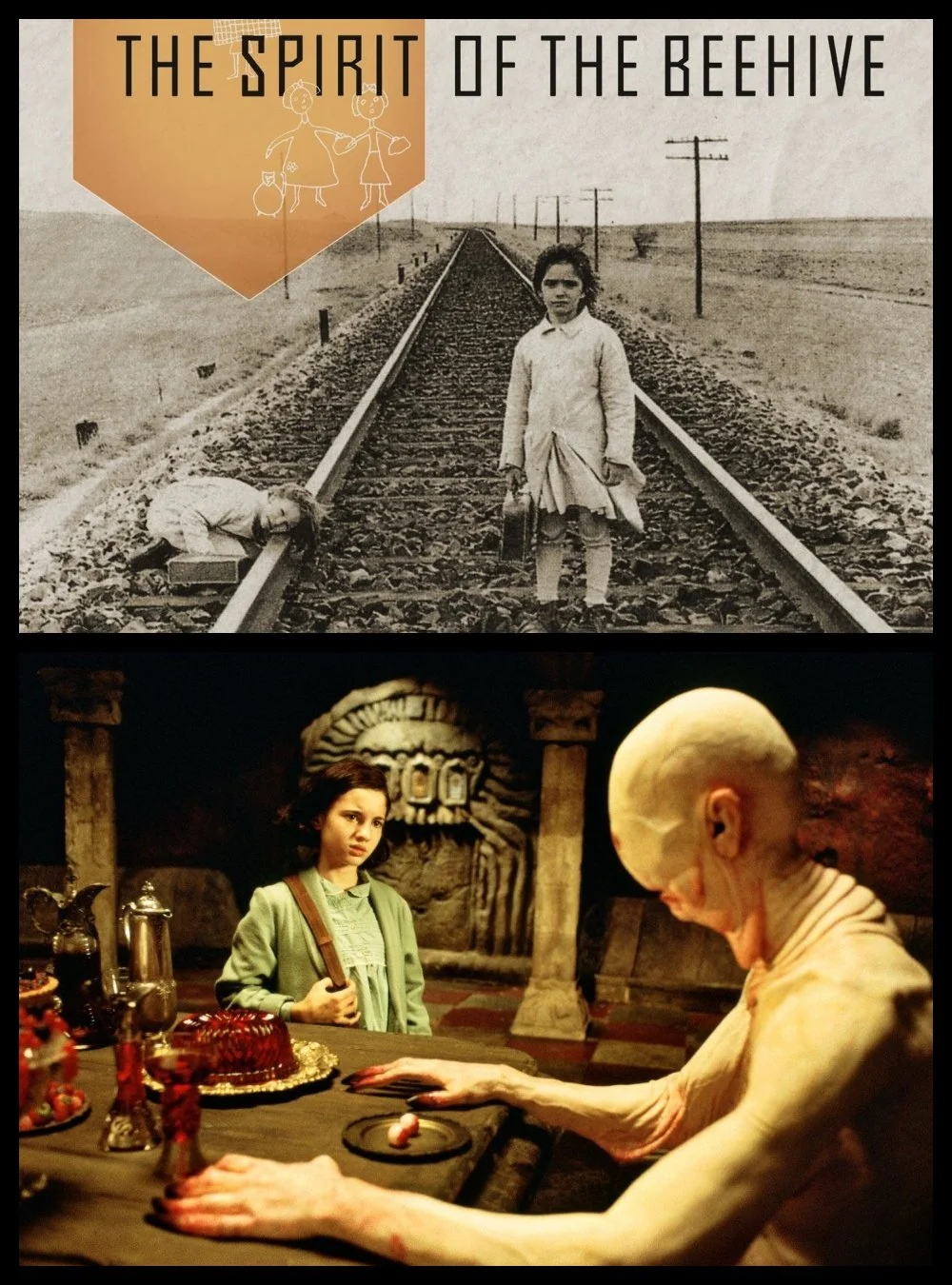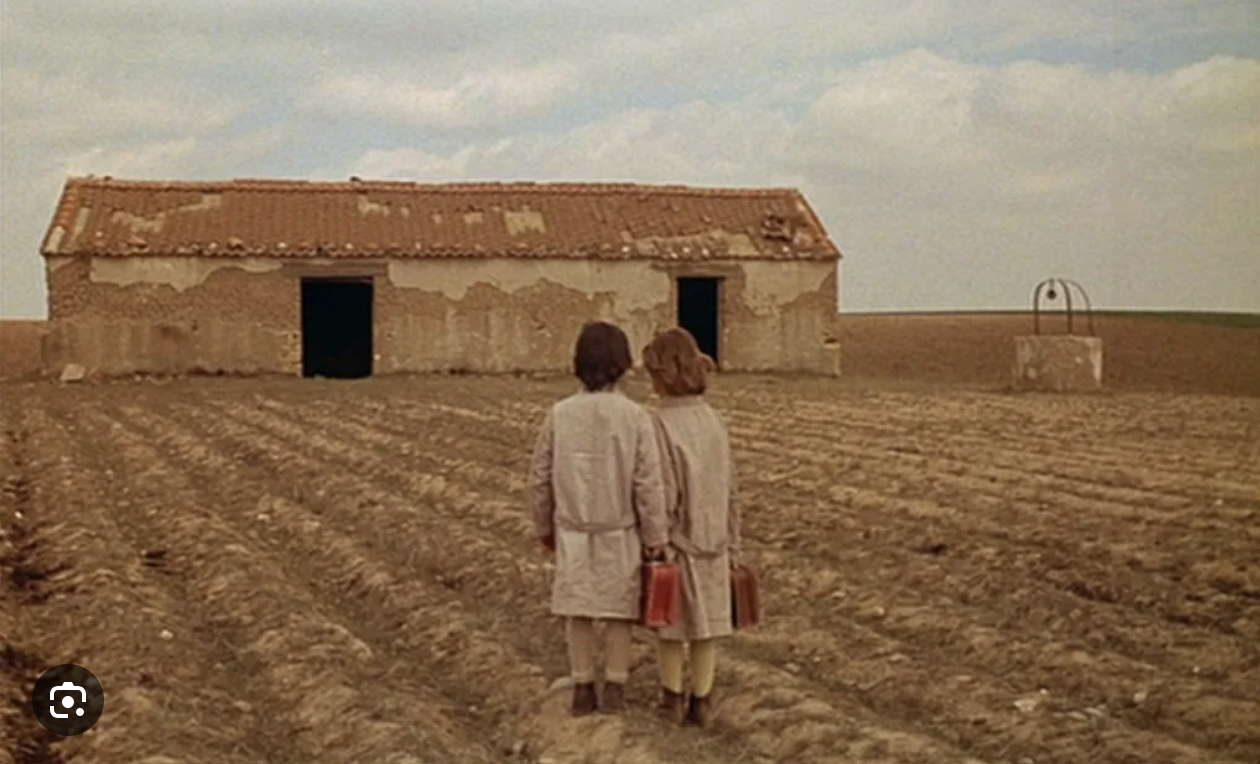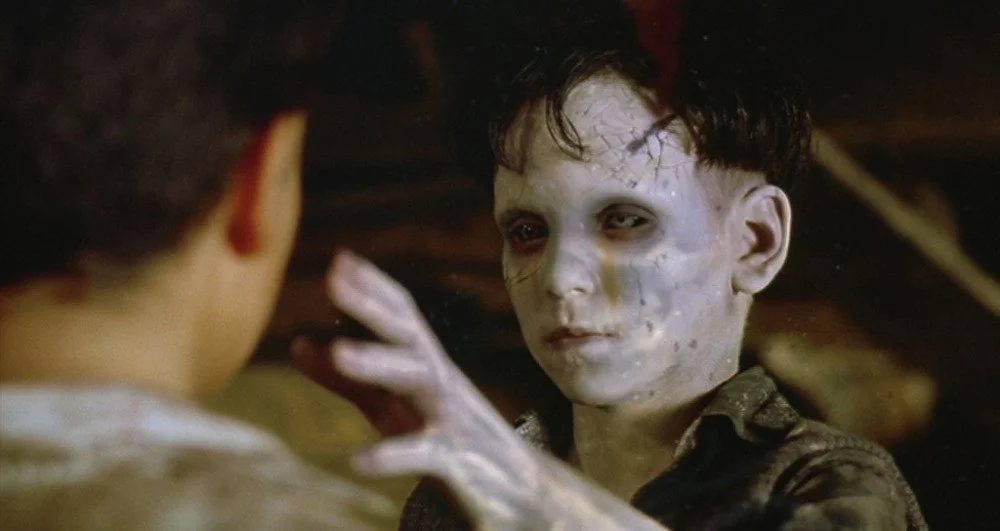Spirit & Flesh: How Movies Influence Moviemakers by Craig Hammill
Victor Erice’s 1973 Spanish movie THE SPIRIT OF THE BEEHIVE, on top of being a justly celebrated classic of world cinema, is also a fascinating Rosette Stone for much of the work of current world-class filmmaker Guillermo Del Toro.
Del Toro is open and effusive in acknowledging the movie’s influence on his own work. He calls THE SPIRIT OF THE BEEHIVE one of his “Top 3 films”. And it is fascinating to see how THE SPIRIT OF THE BEEHIVE’s story of a young girl who understands the complicated adult world around her in a strange, magical way provides clear inspiration for Del Toro’s THE DEVIL’S BACKBONE (2001) and PAN’S LABYRINTH (2006). Even in the interesting detail that all three movies take place in Spain, during the Spanish Civil War.
This connection got this writer thinking again about how moviemakers absorb powerful movies as inspiration and then translate that inspiration into a different movie. All of us who love movies, have movies in our DNA. We eat movies. We drink movies. Movies become mentors, brothers, sisters, best friends, lovers.
What always grabs this writer is HOW different moviemakers harness this inspiration and transform it into expression.
Understandably, for many of us, the expression results in a kind of imitation. Quentin Tarantino’s 1994 PULP FICTION spawned countless imitations that mixed violence, comedy, conversational dialogue, etc.
Then there’s the next level, where moviemakers are deeply impressed by cinematic works but try to craft and reconstitute what they find special in their own voices. Here is where Del Toro’s work and SPIRIT OF THE BEEHIVE live.
THE SPIRIT OF THE BEEHIVE tells the story of six year old Ana who watches the classic Universal monster movie James Whale’s FRANKENSTEIN (1931) when it travels to her Spanish village’s makeshift cinema in the 1930’s. The Monster, his interaction with the Little Girl in the movie, makes such a deep impression on Ana, she starts to see her life through the prism of that movie. Her older sister Isabel likes to scare and startle the impressionable Ana. Isabel tells Ana that Frankenstein actually lives in a nearby desolate farmhouse. From there, Ana goes on a kind of odyssey where her imagination guides how she views the world. At the same time, director Erice does an amazing job of showing how the complicated (though never didactically spelled out) dynamics of Ana’s family have created the isolated, imaginative girl we follow.
Like so many great works of art, it’s hard to convey THE SPIRIT OF THE BEEHIVE in words. That’s why Victor Erice told the story in images and sound as a movie. The film is cinema. There is very little dialogue. Most sequences are told through well thought out visual progressions. We see how the world affects Ana. Then we see how Ana sees the world.
Erice also is successful in creating a constant sense of tension and dread in the movie-will Ana come to harm? Will her story end in tragedy or triumph or something different-without laying down his royal flush until the very last scene.
Del Toro clearly has that talented moviemaker’s instinct for recognizing a great device. Telling stories about the hypocritical adult world through the eyes of children has yielded a number of seminal works: Mark Twain’s THE ADVENTURES OF HUCKLEBERRY FINN, British moviemaker Carol Reed’s THE FALLEN IDOL (1948), even a recent work like Ari Aster’s HEREDITARY (for at least part of its length) all use the device of a child’s point of view to create irony, suspense, rich meaning.
Del Toro’s THE DEVIL’S BACKBONE deals with a boy’s orphanage during the Spanish Civil War that is haunted by a wronged dead boy’s ghost. PAN’S LABYRINTH looks even closer at the horrible effects of fascism through the eyes of 10 year old Ofelia whose family is now under the control of her fascist step-father. Even Del Toro’s recent stop-motion PINOCCHIO (2022) follows this template (and takes place during the Spanish Civil War).
BACKBONE and LABYRINTH are quintessential Del Toro. And when one watches THE SPIRIT OF THE BEEHIVE, one also sees how Victor Erice is a kind of spiritual father to this sub-genre of Del Toro’s work.
These influences are everywhere in great moviemakers’ bodies of work if you look for them. The spirit of Elia Kazan (ON THE WATERFRONT, EAST OF EDEN) is powerful in much of Scorsese’s work (RAGING BULL, KILLERS OF THE FLOWER MOON). The spirit of Michael Curtiz (CASABLANCA, THE ADVENTURES OF ROBIN HOOD, CAPTAIN BLOOD) courses through Steven Spielberg’s action-adventure cinema (JAWS, RAIDERS OF THE LOST ARK, etc)..
And then there are the moviemakers so influenced by a specific movie, they find a way to re-translate it. Ari Aster took THE WICKER MAN and made MIDSOMMAR. Paul Thomas Anderson took THE TREASURE OF THE SIERRA MADRE and made THERE WILL BE BLOOD. Francis Ford Coppola and Brian De Palma took Antonioni’s BLOW UP and made THE CONVERSATION and BLOW OUT respectively.
Ultimately, if a movie is so powerful it catalyzes a moviemaker to create a new, vital, vibrant work, we may just want to be thankful for how cinematic parentage and offspring work in this way.
And of course, it may be that Victor Erice himself was influenced by some work of art to create THE SPIRIT OF THE BEEHIVE. So just as we have great great grandparents whose names we don’t even know, so too does the lineage of inspiration disappear into the fog of the past. And maybe it’s important to be humble about that too.
It may be though that one small extra step may be needed to get to all time great status. Russian composer Sergei Prokofiev said “My chief virtue (or if you like, defect) has been a tireless lifelong search for an original, individual musical idiom. I detest imitation, I detest hackneyed devices.” Somehow we have to absorb the tremendous influences that rock our world into our bloodstream yet find a way to trust something even more profound and scary: the original and unexplainable instincts of our own artistic voice and soul.
Maybe we gain the confidence to trust those quiet mysterious voices by first passing through the scaffolding of inspiration we recognize as greatness.
Craig Hammill is the founder.programmer of Secret Movie Club




